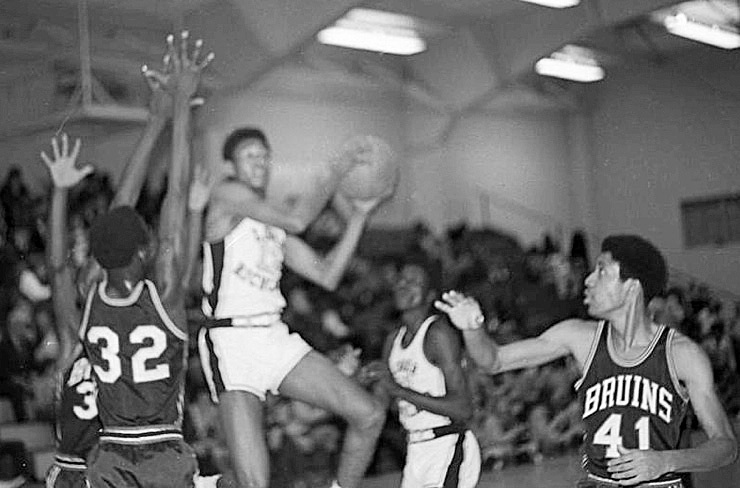By the time the 75th NCAA men’s basketball tournament champion is crowned late on the night of April 8 in Atlanta’s Georgia Dome, more than 500,000 fans will have attended the games and an average of about 6 million television viewers will have watched each of the 63 games.
It’s been an uninterrupted ascent of national and now international popularity for an event that had difficulty enlisting eight participants for the inaugural tourney in 1939 and then played second fiddle to New York’s post-season National Invitational Tournament until the mid-1950s.
Here are five Final Fours that did a great deal to change March into March Madness:
1. NORTH CAROLINA 1957
The Tar Heels finished 32-0 to give the event its second straight unbeaten national champ.
San Francisco, with Bill Russell, had gone 29-0 in 1956. But the manner in which Carolina won — back-to-back triple-overtime wins over Michigan State with Jumpin’ Johnny Green and Kansas with Wilt Chamberlain — was such compelling sports theater that the Final Four was able to grab an unusually high degree of newspaper coverage.
Of far more importance in the long run was the impact of Carolina’s season on its Atlantic Coast Conference.The two wins in Kansas City were televised on a limited basis but the games popularity among viewers led industry pioneer C.D. Chesley to begin putting together the ACC regional network, the first of its kind in any sport. By the mid 1960s, ACC games were so popular on television that the national networks, primarily NBC, rushed to college basketball as an entertainment staple.
2. UCLA 1967
A year earlier at the 1966 Final Four in College Park, Md., Texas Western (now Texas-El Paso) stunned powerful Kentucky in the title game. The game drew international attention when Western coach Don Haskins started five African-American players against Kentucky’s all-white team. But when UCLA defeated Dayton in the ’67 championship game at Louisville, Ky., John Wooden’s Bruin dynasty came into full bloom.
UCLA had won the titles in ’64 and ’65, but repeat winners were not unusual at the time. The win in ’67 capped a 30-0 record and was the first of seven straight for Wooden’s teams.Rarely in athletics of any variety or at any level have there been such periods of complete dominance.
3. N.C. STATE 1974
On North Carolina soil — the Greensboro Final Four — the Wolfpack put a startling, dramatic end to UCLA’s supremacy.
It took two overtimes and incredible performances by State stars David Thompson, Tom Burleson and Monte Towe to overcome UCLA’s Bill Walton. But in the first ever Saturday afternoon semifinals, the giant of all athletics giants was finally felled.
So stunning was the impact of a Final Four loss by the Bruins that the game was front-page news across the nation.
The Wolfpack’s win, coupled with the first Monday night prime time championship game telecast (State’s win over Marquette), gave NBC one of the most successful and historic sporting events in television history.
4. MICHIGAN STATE 1979
Led by Magic Johnson, the Spartans defeated long-shot Indiana State and Larry Bird in a title game at Salt Lake City that had the nation thoroughly mesmerized.
The Nielsen Company put the ratings share at 24.1 percent of all households. Although there were basically only three national networks at the time, the Johnson-Bird showdown was an instant sports classic and quickly became one of the most important developments in NBA history.
The arrival of the two players at the pro level, soon followed by Michael Jordan from North Carolina, equated to a game and TV windfall for the NBA.
5. DUKE 1992
Not since UCLA had the Final Four produced a repeat champion, but Mike Krzyzewski’s Blue Devils did it with a win over Michigan’s Fab Four in Minneapolis.
Led by Christian Laettner, Bob Hurley and Grant Hill, Duke reached its third straight title game — an achievement not since duplicated.
Krzyzewski’s ’92 team defeated Kentucky, Indiana and Michigan in its final three games, but the 104-103 double-overtime win over Kentucky in the East Regional championship at Philadelphia was perhaps the most memorable in basketball history.
The Devils won on a last-second turn-around jumpshot by Laettner after having received a near court-long inbounds pass from Hill.
More than 20 years after Laettner’s shot, it’s still among the popular replays in sports history.









